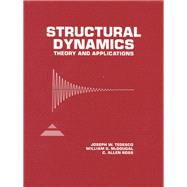This book provides engineering students with an understanding of the dynamic response of structures and the analytical tools to determine such responses. This comprehensive text demonstrates how modern theories and solution techniques can be applied to a large variety of practical, real-world problems. As computers play a more significant role in this field, the authors emphasize discrete methods of analysis and numerical solution techniques throughout the text.









